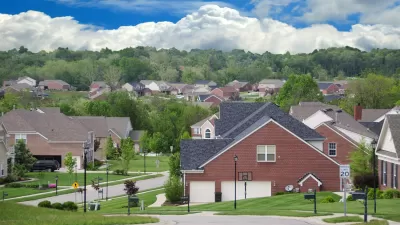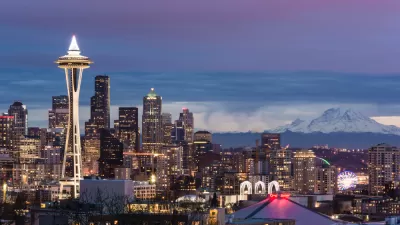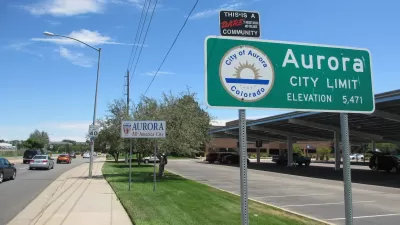As the nation becomes more racially diverse, so too do the suburbs.

In his new book, William H. Frey maps out a shifting American identity, where the traditional sameness of the suburbs is replaced by a growing diversity of families of color. In this post, adapted from his book, Diversity Explosion, he zeros in on the movement of white residents of the 100 largest metropolitan areas. Driven by economic changes—rising costs of living in coastal cities and economic declines in northern industrial towns—whites are moving to cheaper and more prosperous cities and suburbs of the South, such as the Sun Belt areas in and around Austin and Phoenix.
Suburbs across the country reflect the country’s stagnant white population growth and a growing population of child-bearing minorities. According to Frey, "Suburbs will continue to grow in the future, but increasingly as a result of the rapid growth of the nation’s growing young minority families."
FULL STORY: The end of suburban white flight

Alabama: Trump Terminates Settlements for Black Communities Harmed By Raw Sewage
Trump deemed the landmark civil rights agreement “illegal DEI and environmental justice policy.”

Study: Maui’s Plan to Convert Vacation Rentals to Long-Term Housing Could Cause Nearly $1 Billion Economic Loss
The plan would reduce visitor accommodation by 25% resulting in 1,900 jobs lost.

Planetizen Federal Action Tracker
A weekly monitor of how Trump’s orders and actions are impacting planners and planning in America.

Waymo Gets Permission to Map SF’s Market Street
If allowed to operate on the traffic-restricted street, Waymo’s autonomous taxis would have a leg up over ride-hailing competitors — and counter the city’s efforts to grow bike and pedestrian on the thoroughfare.

Parklet Symposium Highlights the Success of Shared Spaces
Parklets got a boost during the Covid-19 pandemic, when the concept was translated to outdoor dining programs that offered restaurants a lifeline during the shutdown.

Federal Homelessness Agency Places Entire Staff on Leave
The U.S. Interagency Council on Homelessness is the only federal agency dedicated to preventing and ending homelessness.
Urban Design for Planners 1: Software Tools
This six-course series explores essential urban design concepts using open source software and equips planners with the tools they need to participate fully in the urban design process.
Planning for Universal Design
Learn the tools for implementing Universal Design in planning regulations.
Caltrans
Smith Gee Studio
Institute for Housing and Urban Development Studies (IHS)
City of Grandview
Harvard GSD Executive Education
Toledo-Lucas County Plan Commissions
Salt Lake City
NYU Wagner Graduate School of Public Service




























